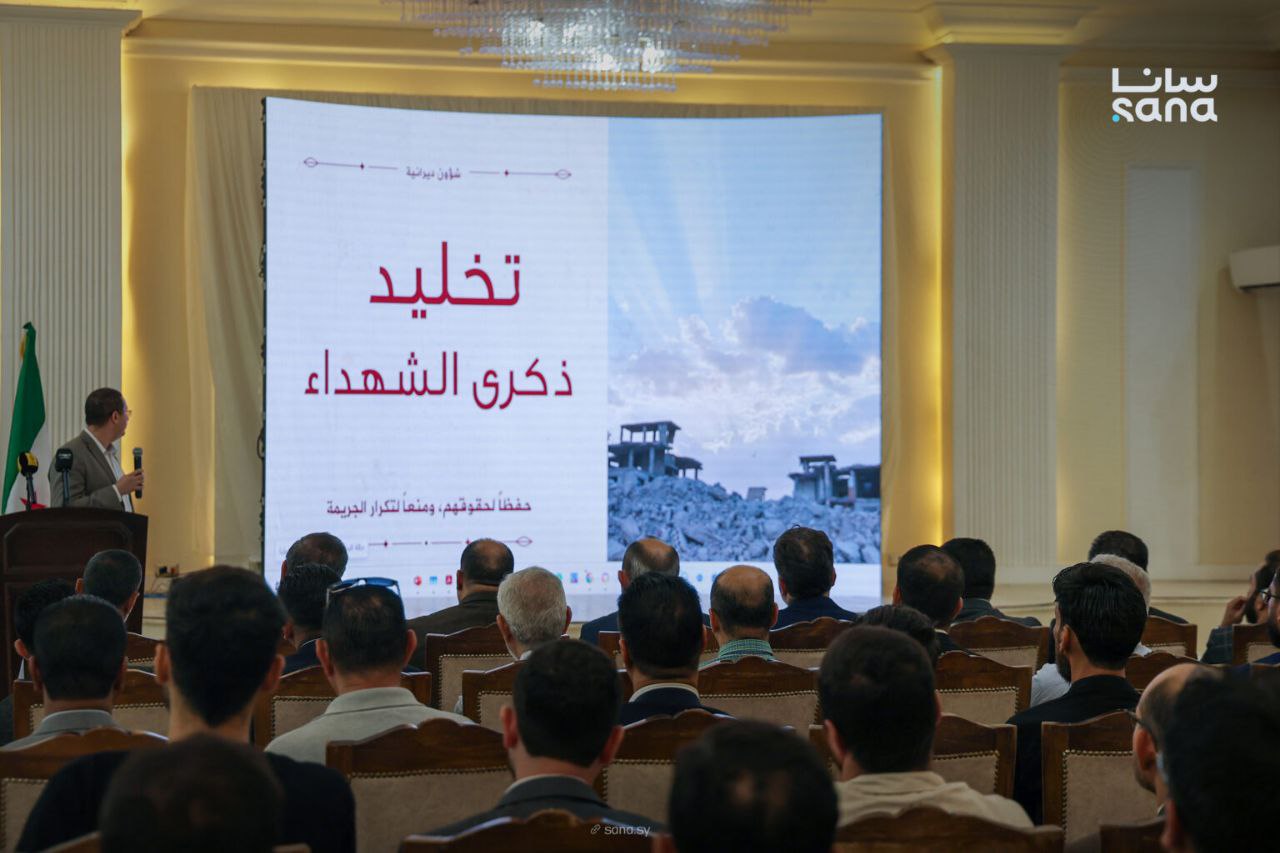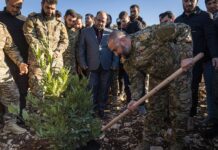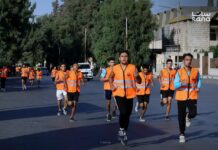
On the twelfth anniversary of the chemical weapons massacre in the Damascus countryside, Syrians gathered in the city of Darayya to commemorate the victims of Assad regime massacres. The conference, “Syria’s Massacres, an Undying Memory, Documentation for Trial,” organized by the Ministry of Culture, emphasized the importance of preserving Syrian memory and documenting crimes as a prelude to achieving justice.
Testimonies Tell the Story of a Four-Year Tragedy
The Habib Palace Hall in Darayya hosted the conference, which included the screening of two documentaries revealing the atrocities of the regime’s crimes against civilians, the systematic bombing of the city, and the displacement of its residents.
Eyewitnesses from the city provided painful testimonies, both live and through recorded interviews, exposing the extent of suffering endured by Darayya’s population during the four-year siege, which international human rights organizations called “war crimes,” displacing approximately 100,000 residents.
The Wound has Become an Identity
Minister of Culture Muhammad al-Saleh delivered a moving speech isaying, “Darayya returns to us, carried on the wings of pain, like a bereaved mother searching the ruins for the faces of her children. She carries unhealed wounds, her memory that has not faded, and martyrs who have not left our minds.”
“We are not here to reopen the wound, but to say that the wound has become an identity, that the blood has become a covenant, and that the cry that emerged from the chests of the children of Darayya has not been extinguished.” He emphasized, “Darayya has become a city in our conscience, a gateway to salvation, and a trust whose sacrifices we swear will not be in vain!”
A National Responsibility
Minister Saleh emphasized that “the massacres that are forgotten are repeated, and we will not forget.” He pointed out that protecting and documenting the narrative of the Syrian revolution and writing history “is not the responsibility of the Ministry of Culture alone, but rather the responsibility of everyone.”
For his part, the director of cultural centers, poet Anas al-Daghim, said, “On this day in 2013, we woke up to death and the chemical attacks in Ghouta. We remember this crime so that we may remain steadfast and steadfast.” He added, “Let us tell the tyrants that your era has ended, but the resistant and revolutionary man who demanded his freedom remains.”
Documentation Prevents Repetition
Basim al-Haw, an anesthesia technician and medical student, spoke about the suffering he experienced during the siege, considering the event “a very important key to documenting massacres so that they are not repeated anywhere in the world.”
Researcher in social and political history, Muhannad al-Katea, called for shedding light on the massacres in the Syrian Jazira region, especially in Hasakah, comparing them to what happened in Darayya.
Documenting Crimes
Media activist Ismail al-Ansari emphasized the importance of digital and physical documentation of crimes through the establishment of museums, memorial gardens, and digital content documenting the events. He called for the multilingual publication of such materials, encouraging activists to archive unpublished evidence. “We know the road to justice is long, but we also know that nations are built on truth, not lies,” said conference organizer Tamam Abulkhair, “In the face of the machinery of oppression and denial, memory becomes a weapon.”








